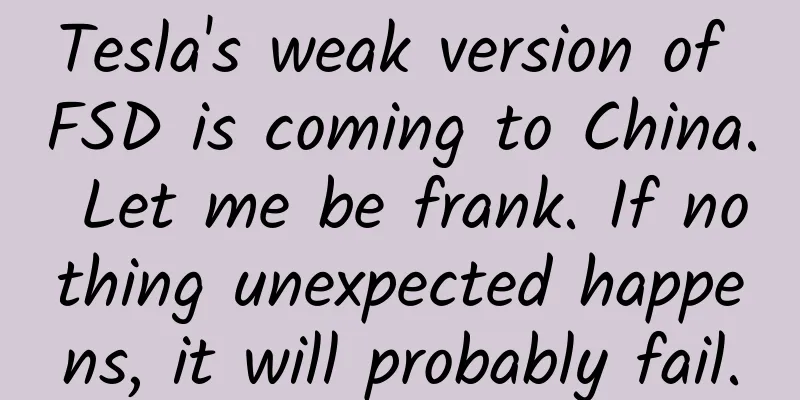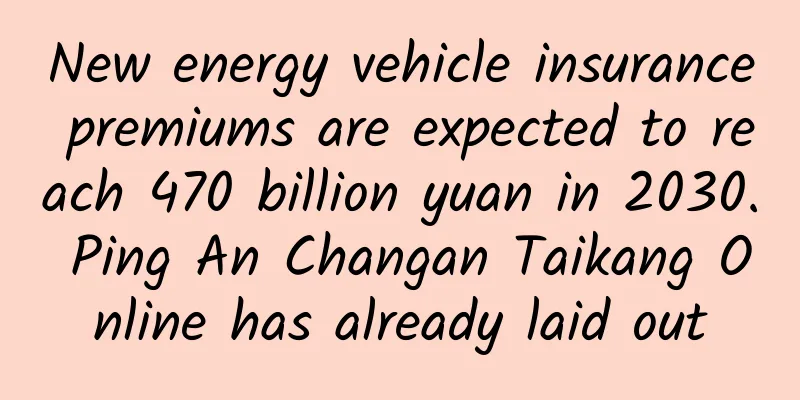Tesla's weak version of FSD is coming to China. Let me be frank. If nothing unexpected happens, it will probably fail.

|
On February 25, 2025, Tesla launched an OTA push of version number 2024.45.32.12 for Chinese users. So far, FSD (Full Self-Driving, known as intelligent assisted driving in China), which is regarded by the outside world as Tesla's killer, has finally entered China. Although the first version is still a "reduced blood version", Musk's five-year-long road to China's intelligent driving has finally stepped on the first accelerator. FSD is indeed lateThe introduction of Tesla FSD into China is indeed too late, or in other words, Musk talked to the relevant departments about this matter too late. In the birthplace of FSD, it can operate smoothly relying solely on pure vision and end-to-end neural networks, but after crossing the ocean, it has to face three major challenges: data acquisition, powerful competitors, and the reputation of being a "IQ tax" with a price of 64,000 yuan. After the news came out, Tesla's stock price fell by more than 10% during the trading session, and its market value fell below $1 trillion. Musk's candor on the earnings call was darkly humorous: "We can only train our algorithms using videos of Chinese roads from the internet." This data acquisition method, which is not even enough to scratch the surface, means that Tesla's algorithm iteration speed is destined to lag behind BYD's daily torrent of 72 million kilometers of real road conditions data. What's even more ironic is that when Tesla engineers were struggling with the dynamic bus lane rules, Huawei's ADS 2.0 was already able to accurately predict vehicles that would cut in, and Xiaopeng's XNGP could even complete millimeter-level extreme parking in the narrow alleys of Guangzhou's old city. The competition in China's intelligent driving market has long gone beyond a simple technological game and evolved into a "systematic war." BYD has launched a smart driving equality movement with the "Eye of God", bringing high-end functions to the 70,000 yuan Seagull model. It is like distributing Dongfeng missiles to grassroots companies. Can you withstand such terrifying combat power? Huawei has built a moat of "LiDAR + Hongmeng Ecosystem". Yu Chengdong's declaration that "it is better than FSD without LiDAR" is supported by the hard-core support of 192-line LiDAR and 5 million kilometers of urban scene data. Xiaopeng is even more aggressive in betting on end-to-end large models, and its map-free NOA takeover rate has quietly approached the level of human drivers. The most deadly weapon in this siege is the subversion of the business model. While Tesla is still sticking to its software usage fee of 64,000 yuan, Chinese automakers have already made intelligent driving systems standard. Looking back at the spring of 2025, the introduction of Tesla FSD into China may be doomed to fail to replicate the myth of iPhone 4 conquering the Chinese market. This is not the failure of a certain enterprise, but a metaphor of the times: when technological innovation enters the deep water zone, no company can dominate the global market with a single technological route. The rise of China's intelligent driving industry is essentially a victory of complex systems over simple systems. It contains BYD's industrial philosophy of maximizing scale effect, Huawei's ambition to restructure the automotive ecosystem with ICT genes, and the oriental wisdom of new forces such as Xiaopeng to supplement computing power with algorithms. As Academician Ouyang Minggao asserted: "The emergence of DeepSeek has given us more confidence in the leading position of local intelligent driving." While Tesla is still struggling with data acquisition issues, Chinese automakers are already standing on the cloud of intelligent driving and looking forward to the next decade. The outcome of this competition may have been predetermined: in the wave of equal rights for intelligent driving initiated by local automakers, Tesla has always stood on the shore with a smile. Actually, it's no use coming too early.The news of Tesla's FSD entering China has been around for a long time. Just like an ice cube thrown into boiling oil, it instantly triggered a chain reaction in China's intelligent driving industry, which in turn produced more far-reaching impacts and indirectly promoted the reconstruction of China's related industrial chain. Whether it is Horizon Robotics' Journey 6 chip or RoboSense's LiDAR, these local supply chain companies that once looked up to Tesla have now become strategic partners of Huawei and Xiaopeng. Now, while Tesla is still struggling with the localization of HW 4.0 hardware, China's intelligent driving industry has quietly completed a smooth transition from technology introduction to standard output. Perhaps just like the automobile industrial revolution a hundred years ago, the final winner was not Mercedes-Benz, which first invented the internal combustion engine, but Ford, which reshaped the industrial logic with the assembly line. In the second half of intelligent driving, the winner may not be determined by the elegance of the code, but by the deep insight into humanized scenarios and the precise grasp of the localized ecology. The end of this competition may have already been written in the OTA update logs of BYD, Huawei, and Xiaopeng. According to a research report by CITIC Securities, the NOA penetration rate in Chinese cities is expected to reach 14% in 2025, but this growth momentum mainly comes from the universal intelligent driving of 100,000-200,000 yuan models. This data not only fits perfectly with the current wave of equal rights for intelligent driving set off by Chinese automakers, but also hints at another result: foreign automakers neither want to play the game nor can they play the game with Chinese automakers - even if Tesla FSD was launched in China five years ago, can it lower its price today and put it in the standard configuration of Model 3? Therefore, the success of FSD in China is not a question of whether it will be implemented sooner or later, but the fact that it does not have enough flexibility under Tesla's global unified market policy. Coupled with the well-known geopolitical issues and the lack of data feed, it is like a soldier with a musket appearing on the modern battlefield when facing local car companies with a torrent of data. Yes, apart from luck, what is FSD going to use to face the intelligent driving systems of Chinese local car companies that are already armed to the teeth? |
Recommend
Italy urgently seeks help from China! Why ask for help? Attached is the latest number of confirmed cases in Italy
Italy is one of the countries most severely affec...
"Naruto" ends: Is the domestic Naruto industry chain also over?
Have you ever watched "Naruto"? This co...
Academicians teach you how to choose a major | Do you want to be a "chief engineer"?
Your browser does not support the video tag Edito...
Be careful of breaking the law! What you bought may be a national second-level protected plant
"Giant pandas, golden monkeys, black-necked ...
How to plan a community event with no experience?
Based on the author's thoughts and ideas from...
How difficult is it for this robotic hand to pick up an egg?
It can crush a can when it needs strength, and it...
How to plan a professional online event?
Planning an event is not an easy task. It is esse...
10,000-word article | In-depth analysis of the promotion and operation strategy behind Douyin
Since I started my content entrepreneurship , I h...
In addition to power generation, it can also control sand! How many surprises are there in photovoltaics that we don’t know about?
□ Li Gengtuo The Forestry and Grassland Bureau of...
The world's first Snapdragon 835 Win10 PC is launched: 8+128GB powerful configuration
Qualcomm's new flagship mobile processor Snapd...
How to solve the problem of overuse of antibiotics? We want to find an alternative
Produced by: Science Popularization China Author:...
How to place wedding photography advertisements on Douyin?
With the rapid development of the short video ind...
Which WeChat mini program development company is best in Changsha? Which company is better at developing WeChat mini-programs?
Which WeChat mini program development company is ...
These "milk tea", "coffee" and "stamps" are all new drugs! Be careful!
The seemingly ordinary "milk tea" and &...
The passion of programmers is actually a kind of pain
[[147859]] I am not a "passionate programmer...









